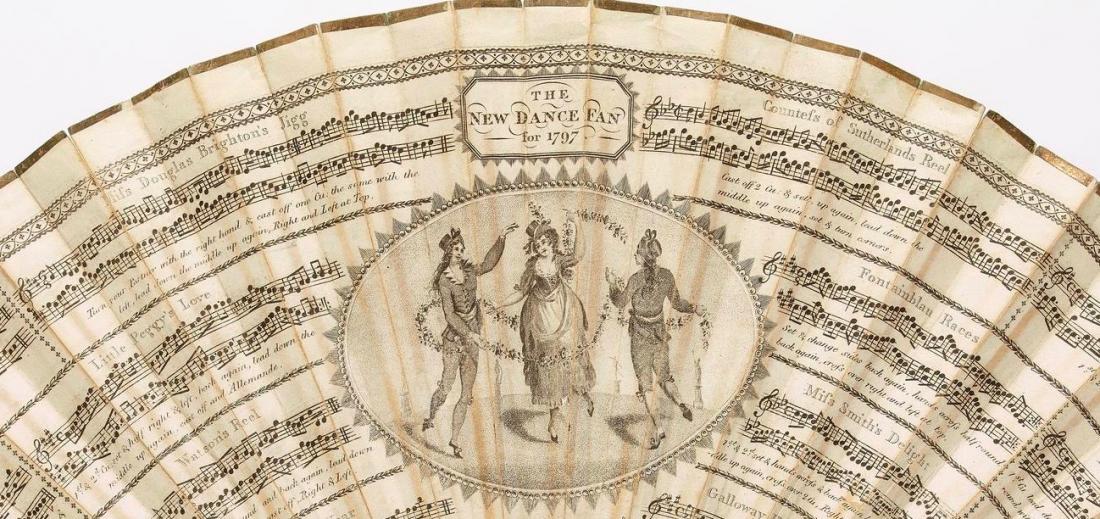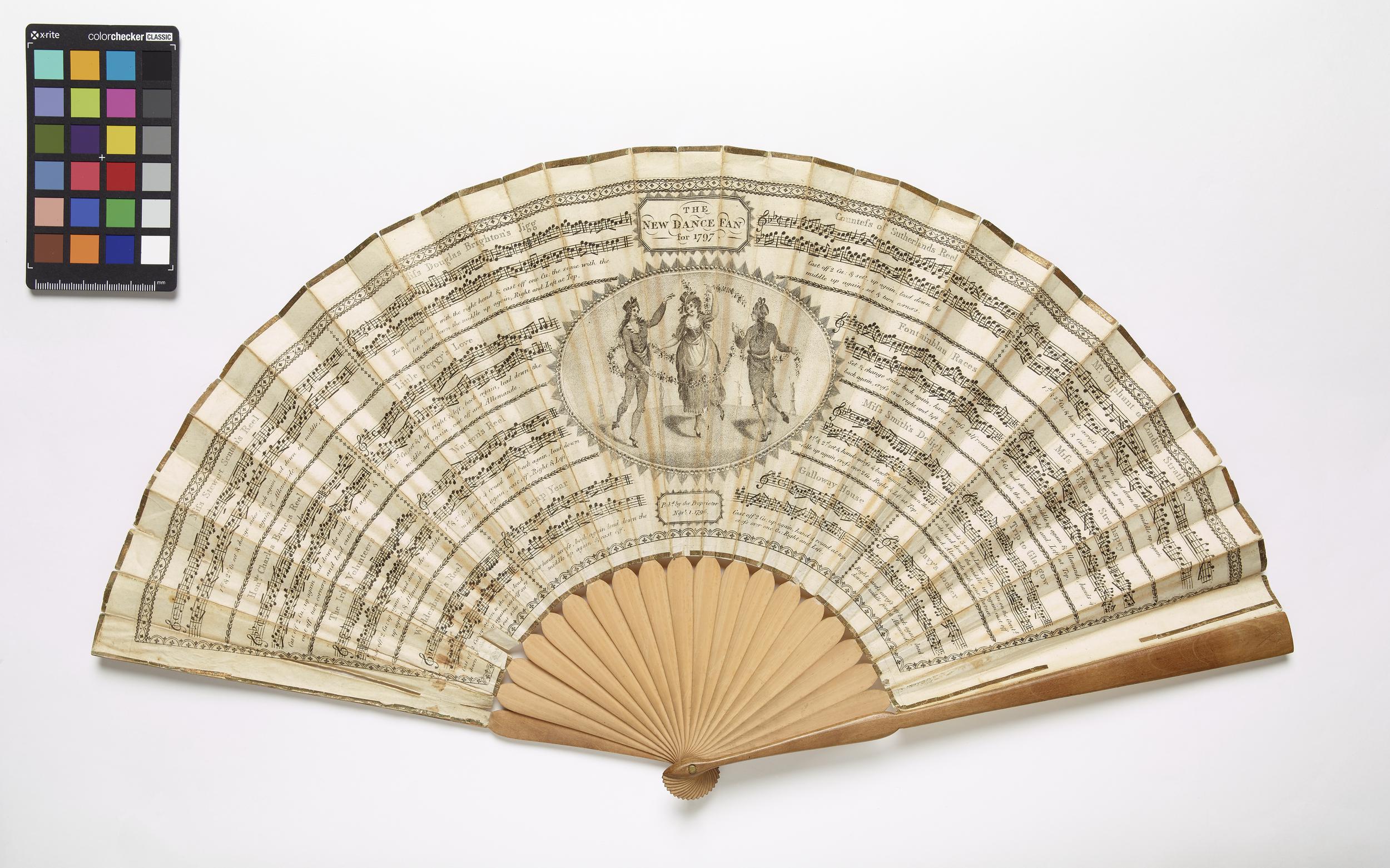
The New Dance Fan for 1797 - Little Peggy's Love and Mr Oliphant of Condie's Strathspey
The New Dance Fan for 1797 (Pubd by the Proprietor Novr 1, 1796)
-
Little Peggy’s Love
-
Mr Oliphant of Condie's Strathspey
Image © The Trustees of the British Museum, 1891,0713.96
To download mp3 files either click on the three dots or right-click on the player and choose the save/download option.
Recording Details:
Ingrid E. Pearson - chalumeau
Robert Percival - tambourine
Recorded at the Royal College of Music, London, 20 May 2021
Hand-held fans were ubiquitous in eighteenth-century Britain, playing a rich role within a thriving commercial culture. Many fans included representations of music-making and dance, as well as scenes, lyrics and printed music from theatrical productions. Dance fans contained instructions for the latest country dances, cotillions and quadrilles, sometimes with an accompanying melody line; The New Caricature Dance Fan For 1794 additionally incorporated a light-hearted parody of dancing couples. Such fans mirrored the format of annual country dance publications, acting not only as portable advertisements but also tapping into aide-memoire and souvenir genres (Armstrong 1978; Harrison 2019). Dance fans incorporating a named publisher were usually produced by dedicated fan makers or craftspeople entering the business, such as the silk-weaving firm Stokes, Scott & Croskey, so it is unclear what relationship they had with music publishers, although a number were also members of the Musicians’ Company (Erickson 2018).
The New Dance Fan for 1797 is largely amalgamated from other sources rather than being a copy of a particular collection. It has a distinct Scottish flavour in keeping with the enthusiasm for Scots music and dance that flourished in England at the end of the eighteenth century, and the explosion of printed dance publications in Scotland (McKee Stapleton 2014). Several of the dances are named after individuals, a practice that was applied to Scottish dance music from around the 1770s (Johnson 2005). Mr Oliphant of Condie’s Strathspey comes from John Bowie’s A Collection of Strathspey Reels & Country Dances, published around 1789. Bowie was a musician, teacher and instrument tuner in Perthshire who later set up a music shop and hosted annual balls with his brother. Ebenezer Oliphant was a subscriber to Bowie’s publication and his sister-in-law, Magdalene Stirling, is represented as a composer in the collection - her The Honble Charles Bruce’s Reel also appears on the dance fan.
An alternative take on Scottishness is evident through Little Peggy’s Love. Originally a ballet staged at the King’s Theatre in 1796, choreographed by Charles-Louis Didelot to music by Cesare Bossi, it premiered between the acts of an opera in a benefit performance for the dancer, Madame Hilligsberg. It was explicitly advertised as being “in the Scotch stile” with Hilligsberg starring in the title role of Peggy. The Scottish connection was seemingly rather tenuous, however, with the Morning Chronicle on 23 April declaring just days after the first performance that “it might as well have been called Russian”, before concluding “We never saw a trifle produce a finer effect”.
One of the more enduring instruments associated with social dance is the tabor and pipe. Consisting of a small drum and a three-holed pipe played by a single musician, it appears often in iconography and archival accounts as an accompaniment to dance, either by itself, in combination with fiddles, or as part of a larger band. Here, we have used a tambourine and chalumeau to mimic the effect of the tabor & pipe.
Further Reading:
Armstrong, Nancy. 1978. The Book of Fans. New York: Mayflower Books.
Erickson, Amy Louise. 2018. “Esther Sleepe, Fan-Maker, and Her Family.” Eighteenth-Century Life 42, no. 2 (April): 15-37.
Harrison, Rosanna. 2019. “A Study of George Wilson’s Eighteenth-Century Narrative Fans as Prints and Mobile Conduct Instructors.” PhD diss., University of Birmingham.
Johnson, David. 2005. Scottish Fiddle Music in the Eighteenth Century: A Music Collection and Historical Study, 3rd ed. Edinburgh: Mercat Press.
McKee Stapleton, Anne. 2014. Pointed Encounters: Dance in Post-Culloden Scottish Literature. Amsterdam and New York: Rodopi.
Newspaper References:
Little Peggy’s Love: Oracle and Public Advertiser 8 April 1796

‘The New Dance Fan for 1797’ (1 November 1796) © The Trustees of the British Museum.
